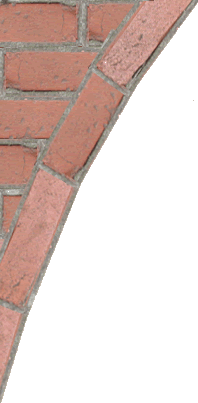The Basic Concept of a Smart Classroom and Distance Learning Technology.
The purpose of this page is to give you an idea of the basic concept and fundamental function of a Smart Classroom and Distant Learning Technology in a typical classroom setting . I don't want to bore you with all the technological details or all the high tech jargon.
I will save that information on a technical reference book which I hope to write someday. "True Confession of an IT, Consultant in Higher Education".
Here is the basic concept. There are three computer classrooms. Each room is equipped with
20-30 student workstations and two per room are ADA compliant stations (Americans with Disability Act).
Each Student workstation is equipped with a computer (windows PC), a monitor, Microsoft Office Suite software, CD-ROM/DVD, Zip Drive, and an Internet connection to the Web. In addition,a flat microphone labeled "My Turn" is on top of the desktop..
There is one Instructor's Workstation per room. The workstations are fully equipped
with the following; a computer, a monitor, zip drive, CD ROM, application & utility software, Internet connectivity to the Web, DVD/CD audio player, VCR machine, cable TV, stereo amplifier, Document Camera, Document scanner, a telephone, wireless microphone, SP (Smart Panel) Control and an Audio/Video Switcher. The SP controls the On/Off power switch to the Video Projector, the volume level for the in-house speaker system and other sources you choose to display. Example; Any sources Video/DVD/VCR, local computer and aux input from guest laptop.
At the front of the classroom, there is a wall mounted projection screen. Two rooms are equipped with electric screens that can be raised or lowered by a wall switch. (Room-105 &107)
At above the dry/erase board, there is a wall-mounted camera. It is a robotic camera system with built-in, pan, tilt and zoom (PTZ) mechanisms.The function of the camera is to focus on the students.
During Distance Learning mode; the camera is activated by a signal by pressing the "My Turn" button on a hard-wired tabletop microphone at the Student workstation.
To operate the camera by default it is on Wide View of the entire classroom. Upon the student pressing the button at the microphone. Instantly both the camera (pan/tilt/zoom) at the target voice is heard over the microphone. (at the farside) That particular student is now on full screen on the FAR END (at CSUSB main campus or whereever connected) that is receiving this signal. If two students presses the button at the same time, First Come Is First Served. When the student is finished speaking, the camera returns back to wide screen view of the entire classroom.
On Distance Learning mode; At the Far-End, it allows the instructors to identify each student individually face-to-face for interaction and collaboration. Building this one-on-one relationship will enhanced the overall learning experience by making distance learning a more responsive and effective interaction.
At the rear of each classroom, there is several pieces of equipment housed at the cabinet.
1) A 50" wide television monitor for viewing the students or instructor at the Far-End (the remote site),
2) A custom-made cabinet to housed the microphone mixers.
3) Programmable control devices.
4) A television is mounted on top of the cabinet and bolted to the wall against earthquake. On top of the TV, there is a second camera. The purpose of this camera is to keep track and focus on the Instructor in front of the room during their lecture. This is controlled remotely by the operator(s) in the Control Booth in Room 103.
Basically, when the class is in session it would function as a regular Smart Classroom.
The instructor would operate the equipment on their own. By pressing a couple of buttons, the course applications from the Computer, DVD, Vcr, Cable Tv, Document Camera, etc., or whatever choice is made will be displayed to the front video projection screen. Automatically the audio and video signals are routed through the video projector and house ceiling speakers will be heard.
On Distance Learning mode, the video is compressed for bandwidth efficiency during transmission. First, there should be coordination of schedule for time and date of each classes or conferences by those making the events.
Secondly, the operator must turn "On" all the power to the equipment. Third, coordination is needed between the two operators (Main Campus & PDC) so connections are establish at both Far-Ends and local, so class program or event are in sync.
I hope you found the above information useful and valuable next time you are teaching using Smart Classroom or Distance Learning technology.
The most challenging part of this project is system integration, programming, testing, calibration and troubleshooting.
This website is copyrighted
Andy Gildore Jr. October 1, 2002



